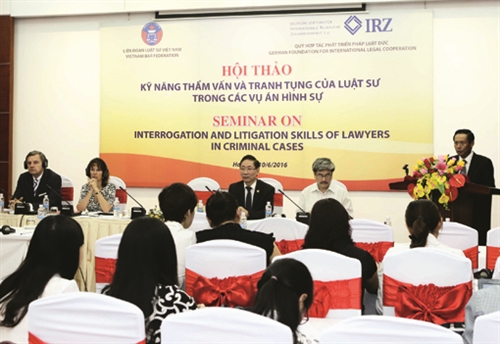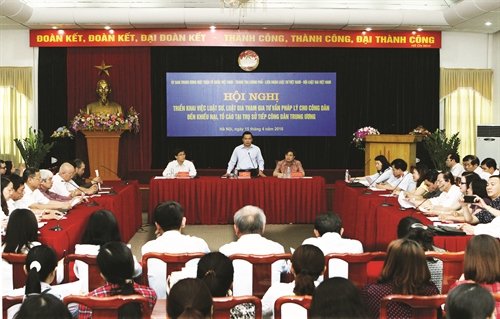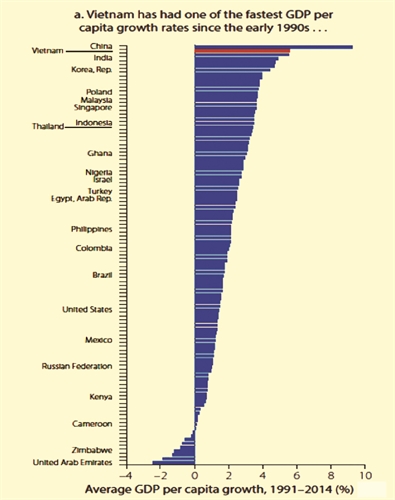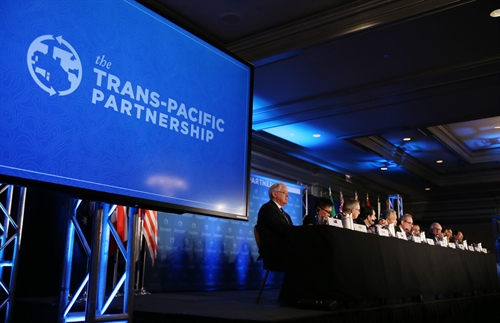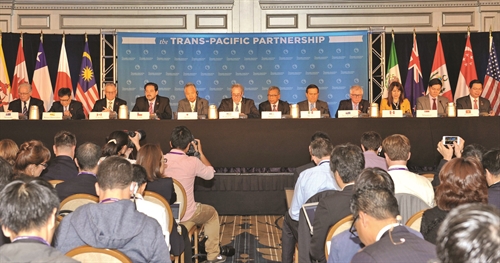Nguyen Hong Thao
Professor Associate in Law
National University of Hanoi
Diplomacy Academy of Vietnam
On July 12, 2016, the Arbitral Tribunal (the Tribunal) constituted under Annex VII to the 1982 United Nations Convention on the Law of the Sea (the Convention) issued the Award on the merits of the legal case filed by the Republic of the Philippines (the Philippines) against the People’s Republic of China (China) in the South China Sea (East Sea)[1].
For the first time in its history, China - the “world center” - was sued by a small country on a maritime dispute. It is the first time the Tribunal has clear and direct answers and explanations in detail as to what is the right implementation of Article 121.3 of the Convention and thereby contributes to the development of the law of the sea. The verdict has not only affected the main stakeholders of the case but also many other countries in the region and beyond. After 17 years of bilateral negotiations and three years of lawsuits and procedures for trial, the verdict given is considered beneficial to the Philippines. The Tribunal ruled that the verdict is final and binding for all stakeholders, even for the absent party. China’s refusal to participate did not affect the Tribunal’s judgment. The ruling has played an important role in politico-economic and security affairs of the countries in the East Sea, in the ASEAN’s internal solidarity, the Sino-US competition and foreign policies of the countries having interests in the East Sea. The ruling is also a test of the credibility of international law and of the respect and goodwill of the parties in its implementation. The unintended effects of the ruling will also have an impact on many generations.
The 501-page ruling affirmed the Tribunal has the competence to fully review the Philippines submissions and gave answer to each question.
Jurisdiction
In addition to the arguments announced in the award on jurisdiction and admissibility dated October 29, 2015, the Tribunal continues considering the exceptions that Chinese declaration in 2006 to Article 298 of the Convention may discourage competence. The two new exceptions have been rejected. The Tribunal pointed out that the exception in Article 298 would apply only if the Philippines’ submissions concerned law enforcement activities in China’s exclusive economic zone. However, because the Philippines’ submissions related to the events taking place in the Philippines’ own exclusive economic zone or in the territorial waters, should Article 298 not hinder the jurisdiction of the Tribunal. The second exception is that military activities do not fall under the jurisdiction of the Tribunal. Deriving from the fact that China had repeatedly emphasized the non-military nature of its land reclamation activities and had stated at the highest level that China will not militarize its presence in the Spratlys, the Tribunal decided not to consider those activities to be military in nature. This argument allows the Tribunal to eliminate the exception of Article 298 related to military activities. By that conclusion, the Tribunal has confirmed the value of unilateral acts of States, especially through the statements of high-ranking leaders, thus creating a subsidiary source of international law which is of binding nature. Based on the analysis of the two awards on jurisdiction and merits, the Tribunal declared it has full competence to consider the merits of the submissions from the Philippines.
 |
| The Permanent Court of Arbitration __Photo: Internet |
The “so-called” nine-dash line
The Tribunal has used the method of elimination to identify the most common between the Philippines’ submissions and China’s claims over which the Tribunal has jurisdiction. The Tribunal affirmed not to consider the issue of sovereignty over maritime features within the nine-dash line.
The Tribunal has carefully reviewed the historic title concept. The historic title can create the sovereignty and the Claimant State must give sufficient evidences. This concept is referred to in Article 15 of the Convention relating to delimitation of the territorial sea. Considering the historic title can be eliminated by the Chinese declaration in 2006. However, China has never proven the legal nature and scope of his historic title that entails. Chinese declarations used to note the sovereignty over the islands and adjacent waters, and also demand “the relevant rights formed in the long historical course”. The vagueness and ambiguity in the statements made by China do not prove their historic title.
According to the Tribunal, China’s claim to historic rights to resources within the nine-dash line is inconsistent with the detailed allocation of rights and maritime zones in the Convention. If China had historic rights to the resources in the waters of the East Sea, such rights were extinguished by the entry into force of the Convention to the extent those maritime zones within the scope of the nine-dash line were incompatible with the Convention’s system of maritime zones. On the other hand, before the entry into force of the Convention and the exclusive economic zone becomes a customary law institution, beyond the 12 nautical miles territorial waters are the high seas. All fishing activities of fishermen from China and other countries in those areas had been the exercise of the right of freedom of fishing, not historic. So, maritime and fishing activities outside territorial seas cannot form the basis for the formation of historic rights.
The Tribunal noted although there is evidence that Chinese navigators and their fishermen, as well as those from other countries, had historically made use of these islands in the East Sea, it’s not true that China has exercised historically exclusive control over the waters or resources or prevented other States from exploiting the resources in the East Sea. So, with submissions Nos. 1 and 2 of the Philippines concerning the legal validity of the nine-dash line, the Tribunal declared that “as between the Philippines and China, there was no legal basis for China to claim historic rights to the resources, in excess of the rights provided for by the Convention within the sea areas falling within the nine-dash line.” By this statement, the Tribunal has dismissed two of three aspects that Chinese scholars often used to justify the dotted line: traditional fishing rights and historic waters claims. There remains only the aspect of claiming sovereignty over maritime features falling within the scope of the nine-dash line, which the Tribunal has no jurisdiction.
The legal status of maritime features in the Spratlys and Scarborough Shoal
Philippines specifically mentioned only seven features in their submissions. The Tribunal agrees with the Philippines that Johnson South Reef, Cuarteron Reef, Fiery Cross Reef and Scarborough are rocks; Subi Reef, Hughes Reef, Mischief Reef and Second Thomas Shoal are the low-tide elevations in natural conditions but it does not agree with the Philippines on the case of Gaven and Mekennam reefs and concluded that both features are high-tide. The Tribunal made a clear interpretation of Article 121.3 and concluded that the entitlement of a feature depends on (i) the objective capacity of the feature; (ii) its natural conditions, to sustain either (iii) a stable community of people, or (iv) economic activity that is not dependent on outside resources or purely extractive in nature. The modern presence of official personnel on many of the features does not establish their capacity in their natural condition, or the land reclamation and infrastructure construction do not change the original legal status of feature, etc. From this argument and in applying the analogue principles, the Tribunal concluded that all of the high-tide features in the Spratly Islands (even the largest island of Itu Aba) are legally “rocks” that do not generate economic exclusive zone or continental shelf. This is an important decision not only for the South China Sea dispute but also for the East China Sea, Diaoyu islands dispute, Tokto islands, the Ryukyu archipelago and other rocky islands dispute applying Article 121.3 of the Convention. It confirms the Tribunal role in minimizing disputes and seeking solutions to peace and international stability. However, China may reject that decision in assuming that the Tribunal exceeded its competence and settle out the submissions of the Philippines.
The Tribunal also concluded that the Convention does not provide for a group of islands like the Spratlys to generate maritime zones collectively as a unit. It prevents any future attempts to establish straight baselines for the Spratlys as a single entity like China did with the Paracels in 1996.
 |
| Panel of Arbitrators of the Permanent Court of Arbitration __Photo: Internet |
The behavior and actions of China
After having determined that all high-tide features in the Spratly islands generate only a 12 nautical miles territorial sea, the Tribunal easily concluded that there is no overlapping exclusive economic zone of the Philippines and China in the Spratlys. So it can notice easily without any maritime delimitation that the activities of fishermen and law enforcement forces of China beyond the scope of 12 nautical miles from the features listed are located in the exclusive economic zone of the Philippines, “because they do not overlap with any other area that may belong to China.” Action to cross ahead the Philippines’ ships by Chinese law enforcement forces in these waters is a violation of the Convention on the International Regulations for Preventing Collisions at Sea in 1972 and the international conventions on maritime safety. Filipino fishermen have traditional fishing rights in Scarborough as well as Chinese, but China has intervened to prevent Filipino fishermen’s access to the sea.
The Tribunal has asked an independent peer research and concluded the construction of artificial islands on the above-mentioned seven features has caused severe harm to the coral reef and marine environment. In particular, the Tribunal also pointed out that Chinese fishermen have engaged in harvesting endangered sea turtles, coral and giant clams on a large scale in the East Sea, using methods that cause serious damage to the coral reef environment. The Chinese Government is aware of these activities and does not fulfill the obligations required under the Convention to prevent. China’s actions have aggravated the conflict in the East Sea.
Reaction of the parties
The ruling has been well received and widely acclaimed worldwide. The judgment promotes the spirit of respect for international law and gives important guidance on the interpretation and application of the Convention. It requests the countries concerned to clarify the content and scope of claims in accordance with the law approved. The UN Secretary General, the US, Japan, Australia, India, Korea, and many ASEAN member states have quickly issued statements confirming their support of the judgment[2]. The ruling is considered final and legally binding. The parties concerned are called to comply with the ruling and to keep restraint and comply with international law.
The award has reduced significantly the disputed waters, clarified the legal status of features in the East Sea, including rocks, shoals and low-tide elevations, and defended the legal status of the exclusive economic zone before the illegal claims based on historic rights. The award gives a new direction to settle disputes through negotiations and other peaceful means in the future. It serves as a precedent for other countries engaged in maritime disputes.
The ruling gives back the freedom of navigation and aviation for the international community on most of the East Sea, and quashes any attempt to set up an air defense identification zone (ADIZ) of any country in the East Sea.
The ruling provides the basis for ASEAN countries with Laos acting as the block’s Chair to get a common position. Singapore, the coordinator of the ASEAN-China relations, the country most concerned about freedom of navigation in the East Sea, and Indonesia, the country liberated from the recent upset when its Natuna islands fall within the nine-dash line, will play a proactive role. Malaysia, assured of James Shoal, will continue its policy of economic cooperation with China with the indirect support of the Tribunal’s award.
The Malaysian Foreign Ministry said that “it is important to maintain peace, security and stability through the exercise of self-restraint in the conduct of activities that may further complicate disputes or escalate tension, and avoid the threat to use or the use of force in the East Sea.” Malaysia cherishes peace and stability of the East Sea and believes that China and all relevant parties can find constructive ways to develop healthy dialogues, negotiations and consultations while upholding the supremacy of the rule of law for the peace, safety and security for the region”[3].
Some countries having no direct interests in the East Sea also see the Tribunal’s judgment as a basis for the parties to continue negotiation-based settlement of disputes. The Philippines have actively initiated a proposal to resume negotiations with China, including negotiations on the issue of “setting aside disputes and pursuing joint development.” The proposal is based on clear legal evidence that all the features in the Spratly islands have no exclusive economic zone or continental shelf individually.
The Tribunal’s ruling also exerts a strong impact on future negotiations aimed at finding a lasting solution to the fundamental issue of sovereignty in the East Sea. Taiwan, the author of the eleven- or nine-dash line, defiant to the ruling for dispossessing of 200 nautical miles claims for ItuAba[4], may be pleased that the ruling does not affect its sovereignty. The speech of the President of Taiwan onboard a navy vessel sent to the Itu Aba didn’t mention the nine-dash line.
The biggest question is how China will react to the Tribunal’s award. The ruling has prevented the rise of China as a new superpower challenging the US domination as well as her ambitious plan “one belt, one road” and “core interests”. It put Beijing ahead of two options: continue to reject and lose the credibility from other countries or adjust silently its policy in consistence with the award. On the same day of the award, Chinese President Xi Jinping said that China will not accept any proposition or action based on the award, and that China’s territorial sovereignty and maritime interests in the East Sea, under any circumstances, will not be affected by the award[5]. China’s Foreign Ministry said the judgment is null and void and has no binding force. No doubt, in the near future China will make a huge propaganda campaign to reject the verdict, maintaining its claims in the East Sea. In the history of international proceedings there were some cases of non-appearance before the international juridical bodies and rejection of jurisdiction such as the Nicaragua vs. US case in 1985 and the Greenpeacc Arctic Sunrise ship casein 2013. But with time and pressure from the international community, countries cooperated to settle the dispute under rulings of the Courts or Tribunals. The international community hopes China, the active participant on the United Nations Third Conference on the Law of the Sea, a global power always declaring peaceful rise, will also not make an exception. China’s Foreign Ministry spokesperson announced on 12 July that “the door is open” for new bilateral consultations between the Philippines and China with regard to the disputes[6]. The international community should also help China quietly adjust its policies and practical actions in line with international law.
The ruling rejected the nine-dash line in terms of waters claims but did not comment on territorial claims. China will continue to assert sovereignty in accordance with the nine-dash line, maintaining even claim 200 nautical miles exclusive economic zones from features. China will continue to strengthen its military presence on the artificial islands. Beijing can consider the possibility to occupy some uninhabited rocks. A scenario predicted by many experts is that China will carry out land reclamation on Scarborough. Another possibility is not high, but might still occur when Beijing attempts to use force to occupy some positions under the control of other parties. Beijing can argue that the Tribunal is wrong in not considering the Spratly islands as a united entity. Instead of setting up a regional air defense identification zone, which is inefficient and difficult to control, Beijing could declare a baseline around the Spratly islands as it did for the Paracel islands in 1996. From this baseline, China continues to expand the disputed waters, instead of the nine-dash line. China can’t easily give up her attempts to control the East Sea, as a counterbalance to the US’s strategic competition. Struggling for sovereignty in the East Sea will occur fiercely. Local clashes are possible, but the parties will keep cold heads to refrain from war. The reaction of China and the lack of enforcement mechanisms of the Tribunal show that although important, legal solution is not a comprehensive solution for conflict resolution in the East Sea. It makes only a half-way. In the immediate future the situation will be tense.
The ruling’s impacts on Vietnam:
As a coastal state having sovereignty in the East Sea, Vietnam “resolutely opposes and rejects all claims based on the “nine-dash line” as they have no legal, historical or practical grounds and, therefore, are invalid.” On December 7, 2014, the Vietnamese Foreign Ministry sent to the Tribunal a statement on the position of preserving Vietnam’s legal rights and interests in the East Sea that may be affected in the case.” Vietnam also expressed its strong support for “contracting states to the Convention in seeking solutions to their disputes concerning the interpretation and application of the Convention, based on the procedures set out in Part XV of the Convention.” The statement says: “Vietnam has no doubt that the Tribunal has jurisdiction in this case” and wishes the Tribunal “could clarify the legal position of the parties to the case and the third parties that are interested in the case.” When performing the joint-submission on the outer limit of the continental shelf with Malaysia in 2009, Vietnam and Malaysia had come from a premise that all features in the Spratly islands are capable to generate only waters no more than 12 nautical miles. Vietnam’s view is fully consistent with the Tribunal Award on merits judgment dated July 12, 2016.
The same day, Vietnam has quickly declared its welcome to “the arbitration tribunal’s issuance of the final ruling on July 12 and will issue a statement on the ruling’s content.”[7] Vietnam once again reiterates its consistent stance on settling disputes in the East Sea by peaceful means, including diplomatic and legal processes without the use or threat to use of force, as in line with international law, including the Convention, maintaining peace and stability in the region, security, safety and freedom of navigation in and over-flight above the East Sea, and respecting the law-abiding principle in seas and oceans.
On this occasion, Vietnam once again affirms its sovereignty over Hoang Sa (Paracels) and Truong Sa (Spratlys) archipelagos, the sovereignty over internal waters and territorial waters, the sovereign right and jurisdiction over Vietnam’s exclusive economic zone and continental shelf as defined in line with the Convention. Hence, Vietnam should carefully study the judgment to have policies and react accordingly.
Vietnam can learn from this experience to use legal measures in determining the legal status of features in the Paracels, to reject the illegal baseline around the Paracels declared by China in 1996, and reduce maritime disputes off the Gulf of Tonkin. Vietnam also has a facility to combat violations of the marine environment.
The Tribunal’s ruling also creates favorable conditions for Vietnam to implement the National Assembly’s Resolution dated June 23, 1994, to ratify the 1982 United Nations Convention on the Law of the Sea. The resolution allows the study of necessary amendments and supplements to relevant provisions of national law in line with the Convention to ensure the interests of Vietnam.
A resolution to the East Sea dispute must be comprehensive, covering political, diplomatic, legal, economic, security and defense affairs. Legal tools are important to narrow differences, help parties adjust their policies, with the right decision to satisfactorily resolve the sovereignty disputes for peace, stability and prosperity of the region and the world.-
https://www.theguardian.com/world/2016/jul/12/philippines-wins-south-china-sea-case-against-china

